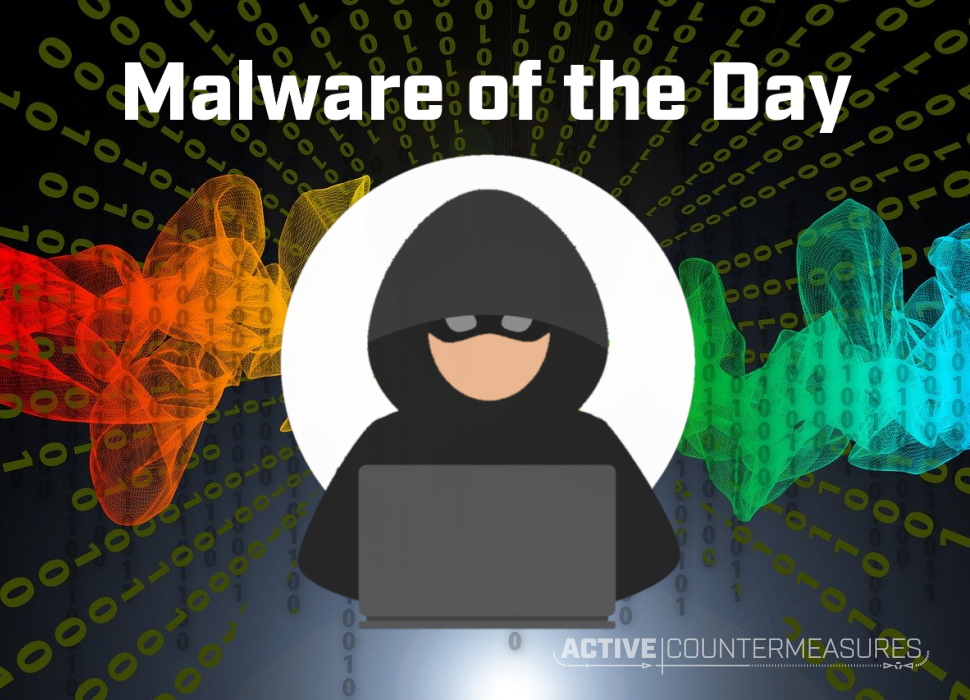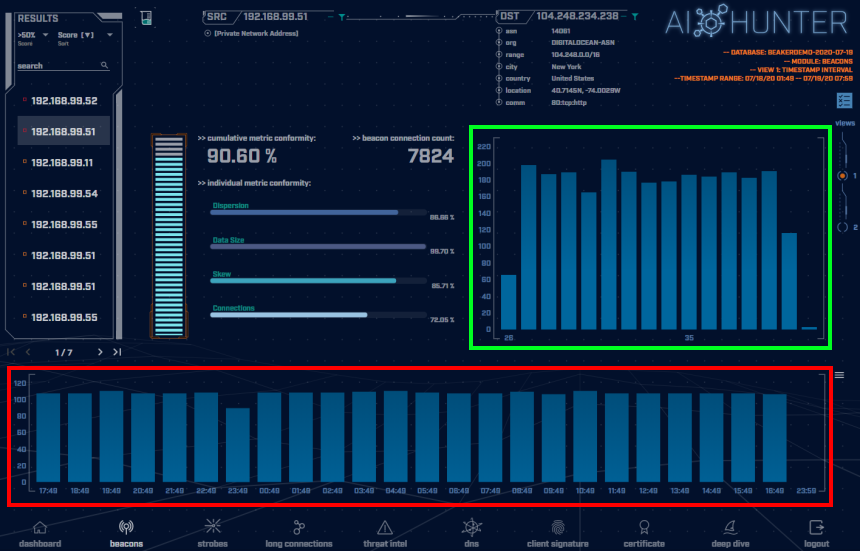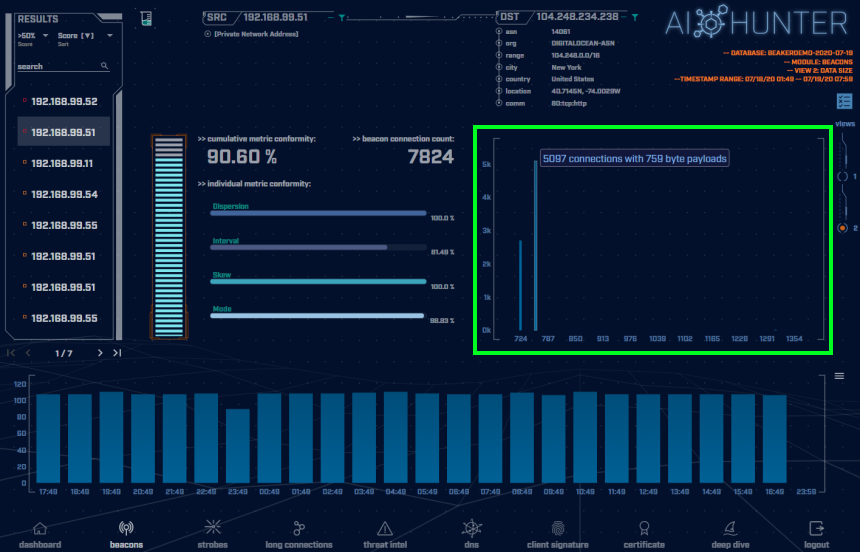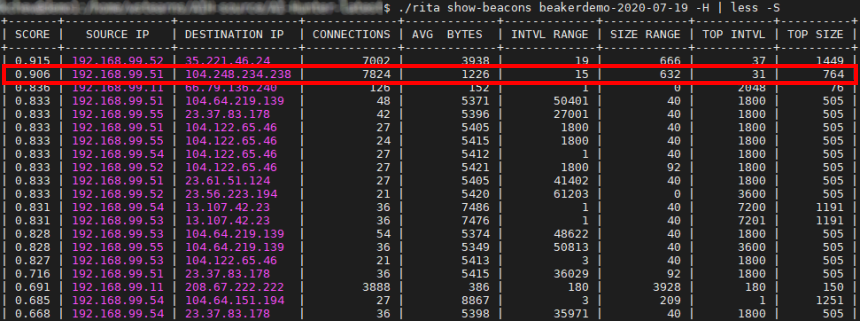Malware of the Day – Taidoor

What is Malware of the Day?
Lab Setup
Malware: Taidoor
AKA: The Taidoor Campaign, a BKDR_SIMBOT variant.
Traffic Type: APT
Connection Type: Reverse HTTP
C2 Platform: Cobalt Strike
Origin of Sample: https://github.com/rsmudge/Malleable-C2-Profiles/blob/master/APT/taidoor.profile
Host Payload Delivery Method: Powershell one-liner
Target Host/Victim: 192.168.99.51 – Windows 10 x64
C2 Server: 104.248.234.238
Beacon Timing: 40s
Jitter: 35%
Brief
Our focus is on identifying and detecting network beaconing behavior. We are using AI-Hunter/RITA as our network threat and C2/beacon detection platform to visualize the network traffic generated from running the Taidoor malware replication. We encourage you to download and use the PCAP files included in the next section to analyze these files independently using your preferred threat hunt platform to test your detection capabilities.
The above screenshot is taken of the AI-Hunter Beacons module from a 24-hour traffic capture. The Taidoor traffic has been detected as a strong beacon signal of 90.60%.
In the green highlighted box is the beacon timing showing the number of connections of each interval of time in seconds. Here we can see the tight cluster of communications timing from 26 second intervals up to 41 second intervals. Viewing the traffic in a graph like this, we can clearly see the jitter that has been introduced into the timing of a deviation of 35%. This jitter should be just enough to spoof most beacon detection tools that are looking for very rigid timing patterns. These consistent clusters of connection timings, even with some jitter, are evidence of programmed machine communications.
In the red highlighted box are the number of connections per hour (each blue block is a one-hour time frame). The consistency of the number of connections per hour is a tell-tale indicator of non-human behavior. Notice the flatness and uniformity of the hourly histogram. Normal users’ traffic will be much more random in nature and would display greater peaks and valleys in the graph over time.
Switching to the connections Data Size view (shown in the green highlighted box above), we can immediately see that the majority of communications are the same data size. For this sample, we have 5097 connections with 759 byte payloads. This is obviously uniform and structured communications, such as a C2 channel “heartbeat” of checking in for marching orders or to maintain persistence. Normal users’ network communications will vary greatly in data size. The data size analysis is confirming these are programmed communications to be investigated.
A similar beacon analysis can be performed using our open-source framework, RITA ( RITA information and download page (free) ). RITA detected the Taidoor sample traffic as a strong threat, giving it a score of 0.906 (90.6% beacon probability). The network RITA is analyzing is our malware lab and the Taidoor sample is currently listed as the #2 threat. The #1 threat seen in the output will be the subject of next weeks’ malware post.
Capture Files
Because… PCAPs, or it didn’t happen. 😊
The following PCAP files are packet captures taken from our lab environment over a one-hour time frame and a 24-hour time frame. The files were generated using Wireshark from the target host and include normal Windows OS traffic and normal network broadcast traffic. They have not been edited. The PCAPs are safe, standard PCAP files and do not include any actual malware.
Taidoor 1 Hour Capture
taidoor_1hr.pcap (served by Dropbox)
Size: 1.38 MB
MD5 Checksum: dea7e3ef27f53efe48b3baab8bb99b04
Taidoor 24 Hour Capture
taidoor_24hr.pcap (served by Dropbox)
Size: 38.3 MB
MD5 Checksum: f3633111128c2f20bf78a96491255441
Discussion
Want to talk about this or anything else concerning threat hunting? Want to share how good (or bad) other detection tools were able to detect this Taidoor sample?
Join our Discord server titled “Threat Hunter Community” to discuss topics surrounding threat hunting. We invite you to join our server here.
Additional Resources
https://attack.mitre.org/software/S0011/
https://www.infosecurity-magazine.com/news/taidoor-analysis-shows-how-malware-evolves/
https://otx.alienvault.com/adversary/Taidoor/pulses
Until the next!

Keith’s appreciation for computing and processes originates from working with his first personal computer in 1982, a TI-99/4A. Keith sees himself as fortunate for the opportunity to apply his passion towards a career that assists in the advance of technology and continuing education.


